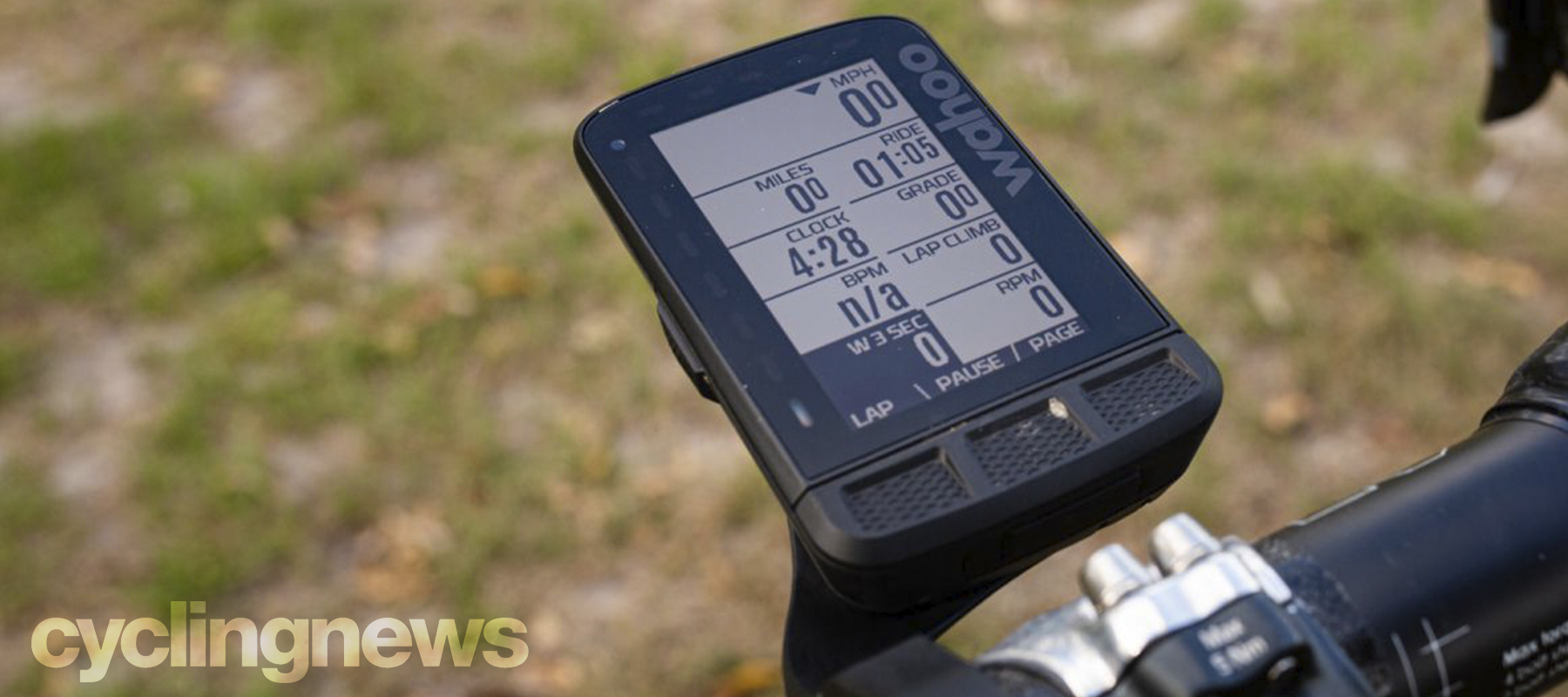Cyclingnews Verdict
Not only has the Wahoo Elemnt Roam added a splash of colour and improved navigation to the package, but it's also one of the most reliable and intuitive systems on the market
Pros
- +
Colour accents improve mapping
- +
App integration
- +
Reliability
Cons
- -
On-device mapping could be improved
You can trust Cyclingnews
Wahoo has been progressively chipping away at Garmin's dominance of the GPS head unit market with its range of computers. While it lacks the bells and whistles of some of its rivals, Wahoo's Elemnt portfolio still comprises some of the best cycling computers on the market.
It's in the reliability stakes where Wahoo has excelled. Pairing is painless and the firmware is stable and gremlin-free. The new Roam edges in above the original Elemnt and pint-sized Elemnt Bolt in terms of features, but does it maintain the flawless user experience?
Now available in colour
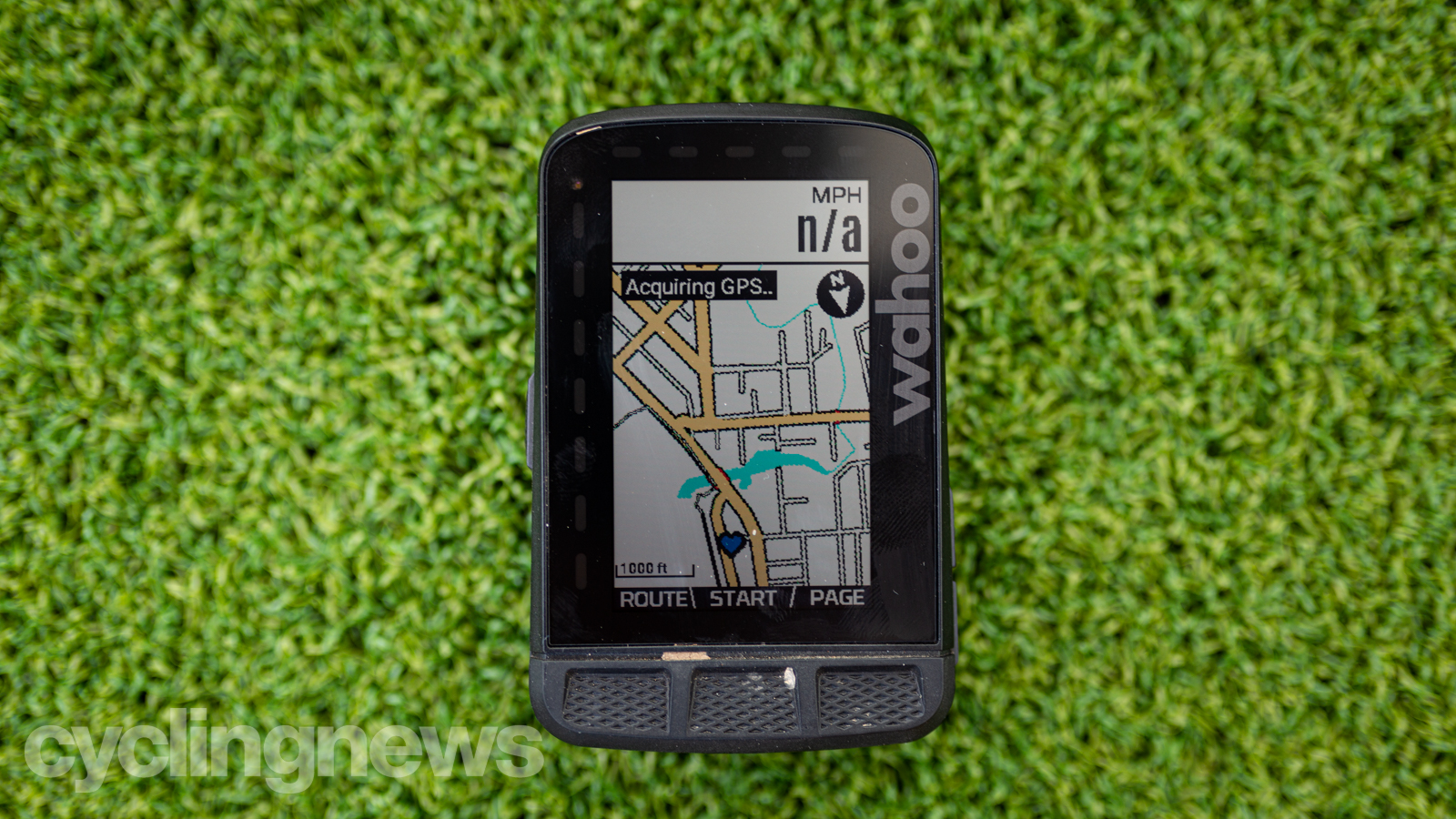
Arguably the biggest news surrounding the Roam is its colour screen. It's not full-colour but rather ROYGBIV, which draws attention to specific attributes such as interval graphs and mapping elements.
The screen itself is constructed from Gorilla Glass and is almost Kindle-like in appearance and function but it works. The Roam also sees a new ambient light sensor which automatically turns on the backlight when you're passing through a tunnel or low-lit area.
Wahoo has again opted to forgo using a touch screen, choosing to employ the same button layout as its previous computers instead. Compared to the Bolt or the original Elemnt, the buttons require a deliberate push to activate but may wear in over time.
The Roam borrows some of the aero design cues from the Bolt including the seamless out-front mount; early batches of these mounts were faulty but after a change of supplier, the problem has been resolved. If you have a third-party mount like those from K-Edge or Cycliq, you're good, provided it has the Wahoo mounting plate.
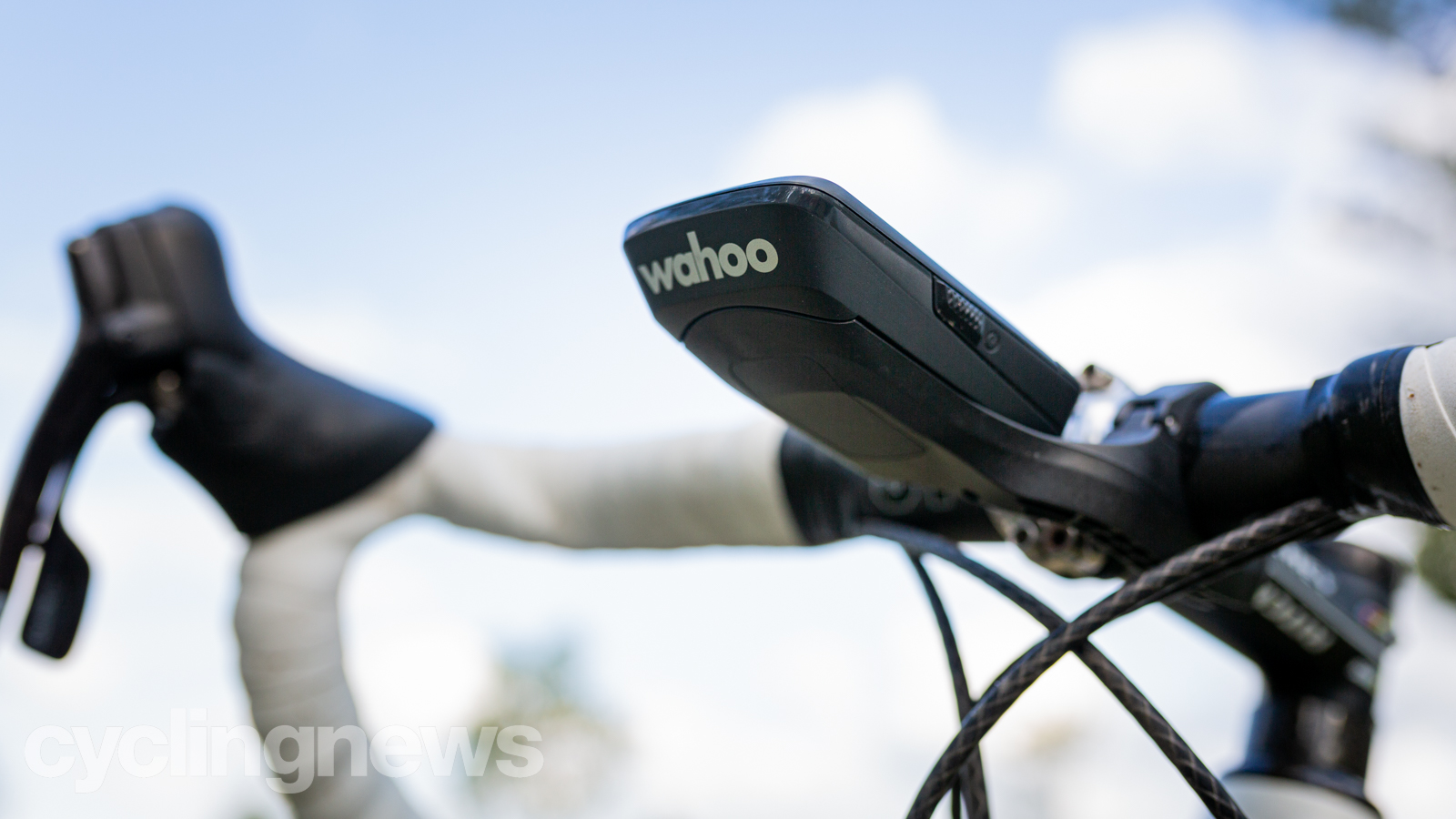
The Roam borrows the aero mount design from the Bolt

All of Wahoo's computers use a quarter-turn mount
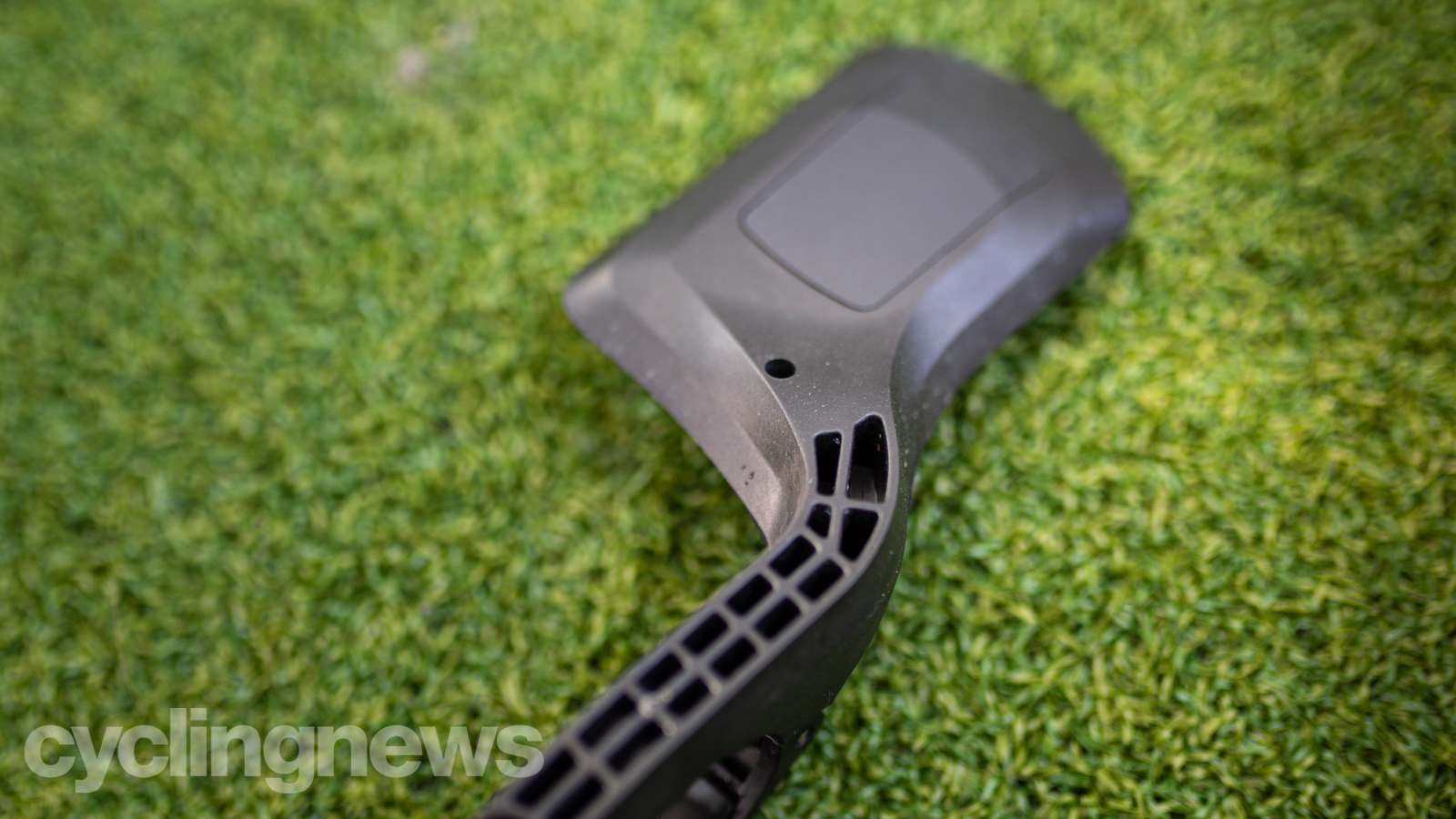
The computer can be bolted to the mount adding another layer of assurance should you be involved in a crash
Screen setup can be organised via the app, and it's here where Wahoo shines. Everything from the order and layout of data fields and screens, to pairing external sensors (which can also be done on the computer itself) happens in the app, and changes are instantly synced to the device.
With a constant connection to your phone, it comes as no surprise that the Roam will show push notifications for calls, texts, and emails, and even has support for emojis. These, of course, can be turned off altogether compliments of a do-not-disturb function that can mute notifications for anywhere from five to 30 minutes.
All your ride data lives on the app, no online portal here. It will instantly push activities onto your favourite third-party services such as Strava, Trainingpeaks and even Dropbox. And if you're one for wires, you can still plug in a USB and grab a .FIT file directly from the device.
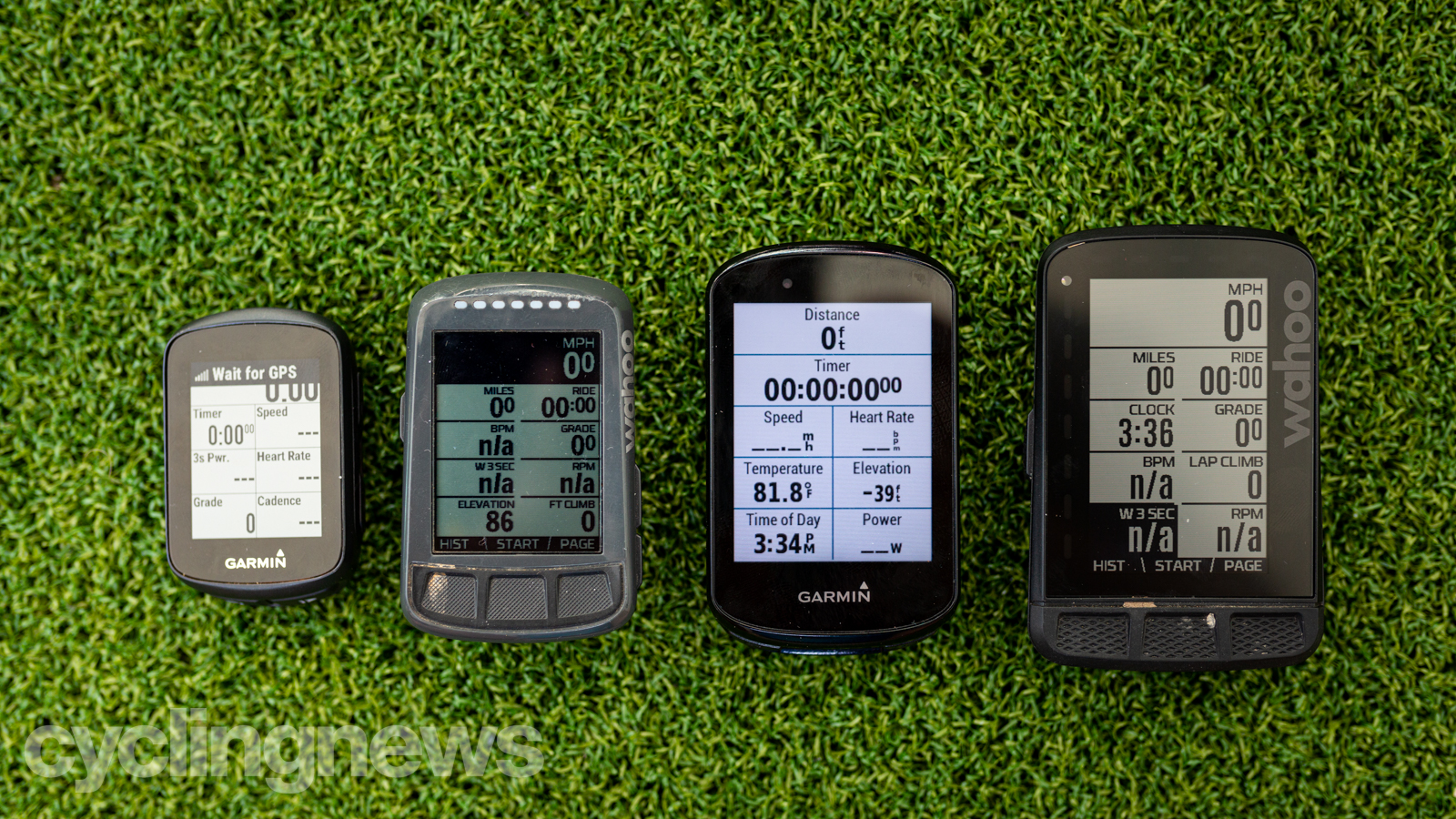
With the larger 2.7in screen, the Roam can display up to 11 data fields, and the app will ask you to rank them based on importance; the buttons on the side allow you to customise data screens on-the-fly without diving into layers of menus. This is one of my favourite features because, between my own bikes and test bikes, I rarely have the same variety of sensors from one ride to the next. This has enabled me to simplify the screen and dump empty data fields with the push of a button.
Data fields range from basic metrics such as speed, distance and cadence, to advanced parameters such as normalised power and TSS.
The Roam also has LEDs along the left and top of the screen which can be used to denote speed, power, upcoming turns, etc, though in bright sunlight they can be hard to see. This is a feature I would trade for additional screen real estate.
The device plays nice with both ANT+ and Bluetooth sensors, and can even talk to smart trainers, electronic drivetrains and muscle-oxygenation sensors. The most recent addition to this list is Garmin's Varia Bike Radar — Wahoo displays incoming car notifications just like the Garmin, but instead of a little dot, there is an animated car.
Wahoo claims a 17-hour battery life but that depends largely on how much you rely on navigational assistance and sensor pairing.
Navigation
In all honesty, there aren't many new features added to the Roam over the Bolt and original Elemnt. One significant improvement is in the mapping, an area where Garmin has always (and still does) maintain an edge.
The previous Wahoo computer's mapping graphics and capabilities were not the best but this has been ironed out with the Roam - especially when it comes to street names which the previous model lacked.
The Roam offers a few different types of routing options including pre-made routes, which are automatically synced from your favourite third-party software. On the device itself, the computer can 'Retrace your ride,' 'Route to Start,' or 'Take me to' which allows you to pick a spot on the map or choose from a list of saved locations. It's here where other computers in a similar price range are a step above the Roam.
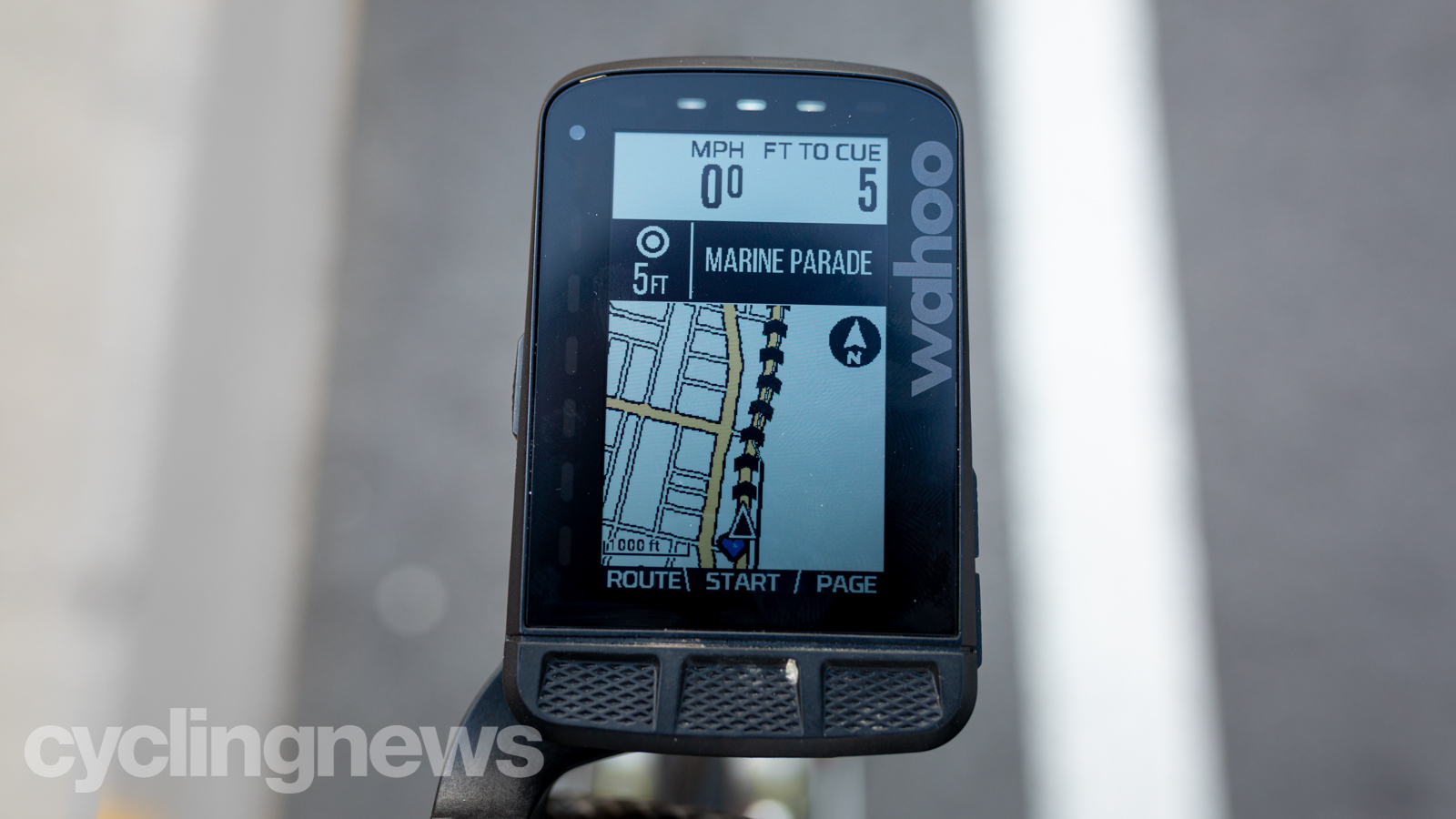
Black chevrons guide you along your riding route
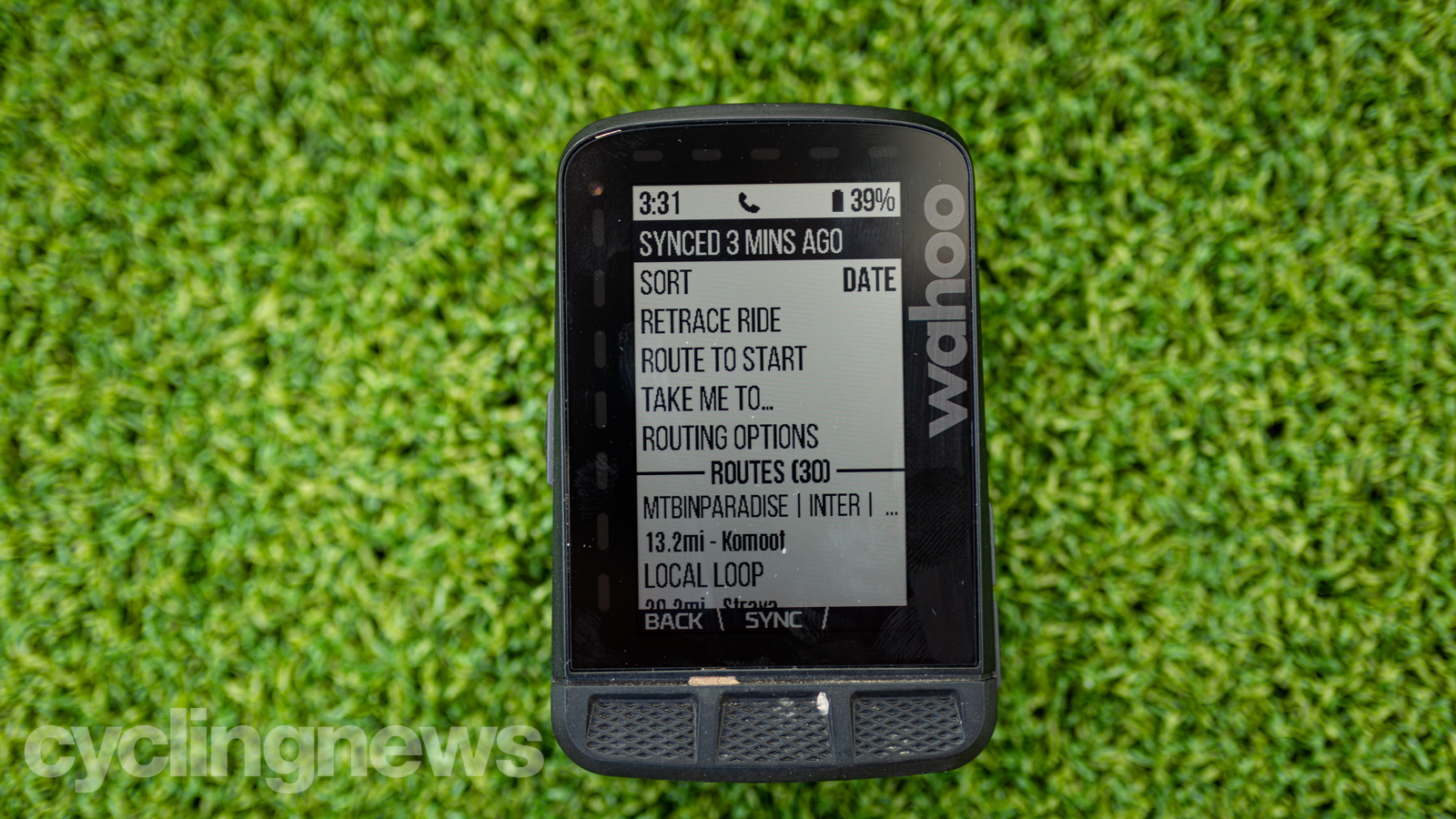
The on-device navigation falls short of similarly price competitors
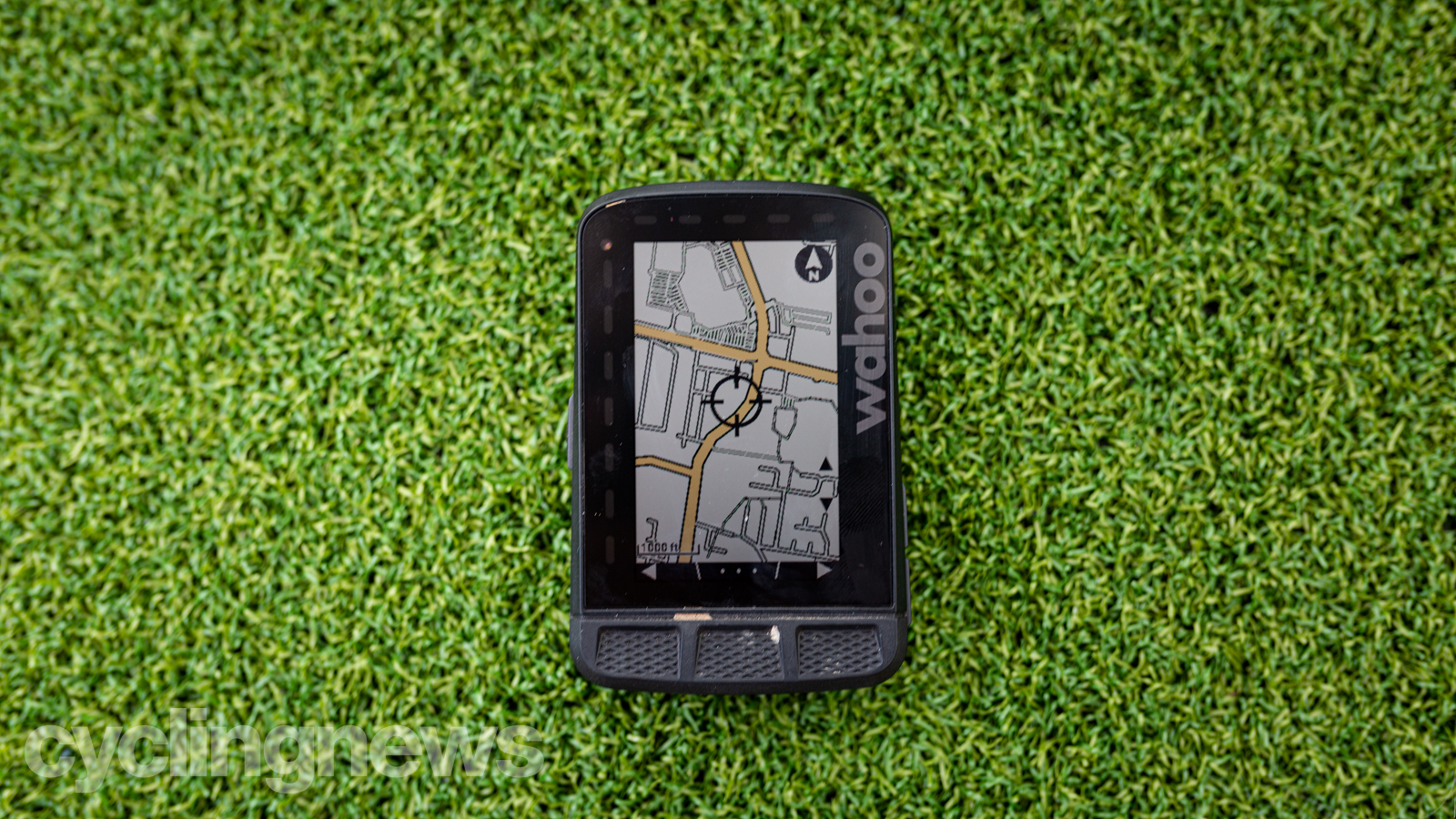
Wahoo uses Open Street Maps to populate its base map, complete with a region-only pre-loaded map pack
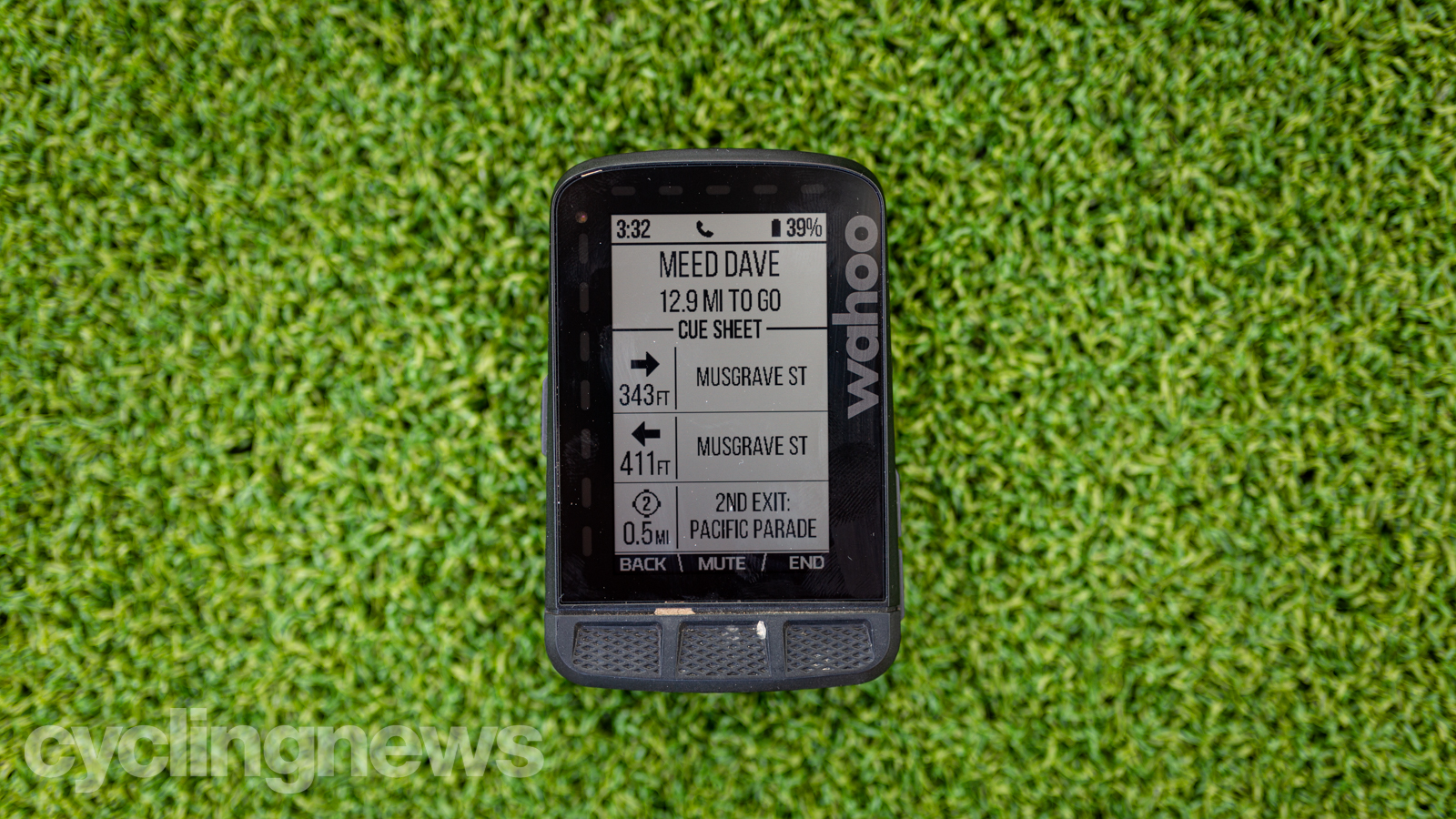
Wahoo claims a 17-hour battery life but that depends largely on how much you rely on navigational assistance
When you do have a route, whether it be from Strava or Komoot, your path is defined by a series of black chevrons, and the Roam will alert you to an upcoming turn no matter what page you're on. Should you miss a corner, the computer will guide you back to your initial route with blue chevrons. In my experience, the Roam tries to guide you back to the very spot you left the course, rather than re-joining further down the road, but while the blue chevrons try to guide you, the black chevrons remain, so you can easily plot your own way if preferred.
Wahoo uses Open Street Maps to populate its base map, complete with a region-only pre-loaded map pack. An added bonus is that global maps are free to download while rival brands such as Garmin make you buy them.
Like it's predecessors, the Roam plays nice with Strava live segments, and offers sharable live tracking so your loved ones can keep track of you.
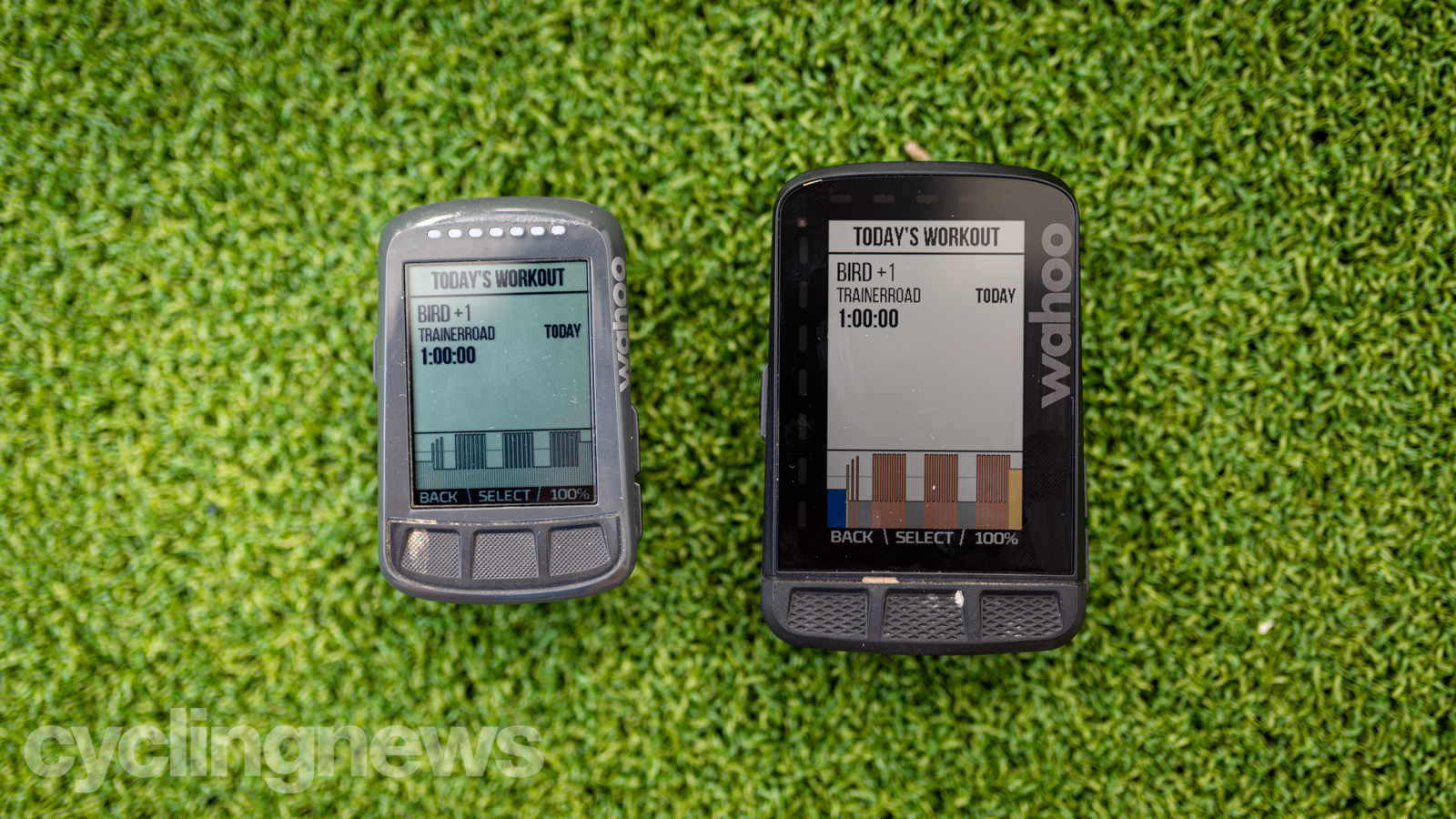
Performance-based metrics
Beyond just recording how many watts you laid down in the final sprint of the weekend's crit, the Roam can help you get faster, too. There are a few workouts pre-loaded into the device including 20-min FTP tests and the unit also allows for workouts to be pushed from Training Peaks, Today's Plan and other third-party services.
To be fair, this isn't a new feature; however, the colour screen makes the workouts substantially easier to read. I've been a long-time fan of TrainerRoad, and its new 'Outside Workouts' functionality automatically syncs workouts to the computer, showing a colour bar graph along the bottom of the screen to help guide you through the intervals.

Verdict
The Roam builds on the foundation laid by the Elemnt including a wide feature set that covers the basics and does it exceptionally well. While the navigation may not quite match the similarly priced Garmin 830, how often do you actually use that function of your computer?
If the answer is all the time, the Wahoo may leave you wanting more but for the rest of us, who may use navigation every once in a while at home, or when you might be travelling, the Roam’s breadth of data fields, seamless smartphone integration and overall ease of use are in a league above the rest.
I do think, for the price, the on-device navigation needs to improve. However, that probably means adding a touchscreen which may increase its pricepoint even further.
With all of that said, the improved mapping and use of colour on the maps show a marked improvement over its stablemates. Add to this the intuitive ease of use and functionality and it's an incredibly difficult device not to recommend.
Tech spec: Wahoo Elemnt Roam
- Price: £299 / $379 / €349 / AU$599
- Display: 2.7 inch colour display with 240x400 pixels resolution
- Weight: 95g
- Storage capacity: 200 waypoints/locations, 100 routes & up to 200 hours of history
- Water-resistant: IPX7
- Connectivity: Wi-Fi, Bluetooth, ANT+
- Sensors: GPS, GLONASS, BEIDOU Galileo, and QZSS
- Battery: USB Rechargable 17-hours
- Dimensions: 89mm x 54.4mm x 17.8 mm
Based on the Gold Coast of Australia, Colin has written tech content for cycling publication for a decade. With hundreds of buyer's guides, reviews and how-tos published in Bike Radar, Cyclingnews, Bike Perfect and Cycling Weekly, as well as in numerous publications dedicated to his other passion, skiing.
Colin was a key contributor to Cyclingnews between 2019 and 2021, during which time he helped build the site's tech coverage from the ground up. Nowadays he works full-time as the news and content editor of Flow MTB magazine.
